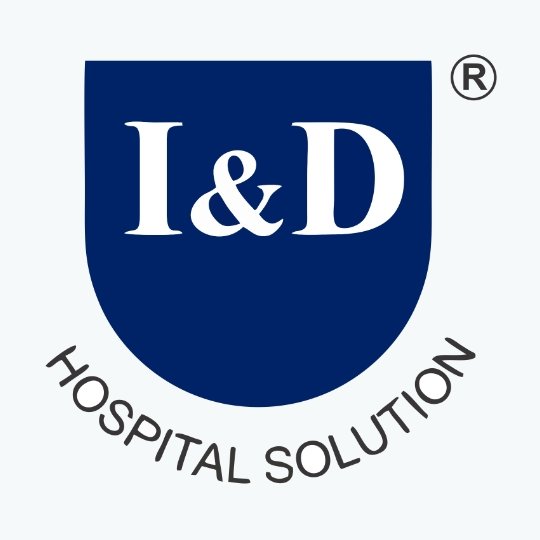The National Accreditation Board for Hospitals & Healthcare Providers (NABH) plays a crucial role as a constituent board of the Quality Council of India. Its primary objective is to establish and execute an accreditation program for healthcare organizations, ensuring the highest standards of quality and patient care. NABH operates with the aim of meeting the diverse needs of consumers while also setting benchmarks for the progress of the healthcare industry. With unwavering support from industry stakeholders, consumers, and the government, NABH enjoys complete functional autonomy in its operations.
AIM
To launch an accreditation program in a mission mode at your hospital so as to prepare the facility for accreditation by NABH.
OBJECTIVES
- Assessing Service Delivery Standards: NABH evaluates the existing service delivery standards of hospitals, meticulously examining various aspects to ensure quality and patient satisfaction.
- Establishing Baseline Quality Indicators: By identifying and measuring baseline levels of quality indicators, NABH creates a foundation for ongoing assessment and improvement efforts.
- Setting Benchmark Standards: NABH establishes benchmark standards for quality indicators, providing a reference point for healthcare organizations to strive for excellence.
- Guiding Structural Design Alterations: To optimize service delivery, NABH suggests and supports the implementation of structural design changes within healthcare facilities.
- Developing Standard Operating Procedures (SOPs): NABH lays down standardized operating procedures for various activities at all levels of care, promoting consistency and efficiency in healthcare practices.
- Training Key Personnel: NABH conducts training programs to equip key personnel with the necessary knowledge and skills to implement and maintain quality improvement processes.
- Reviewing Outcome and Performance: Regular outcome reviews enable NABH to assess the effectiveness of quality improvement initiatives and make further recommendations.
- Promoting Best Practices: NABH fosters a culture of continuous quality improvement by instilling the concept of best practices in the minds of healthcare personnel.
- Readiness for NABH Assessment: Through comprehensive preparation, NABH ensures that hospitals are fully equipped and prepared for assessment by the NABH evaluation team.
ADVANTAGES OF ACCREDITATION
- Enhances and improves healthcare systems.
- Enhances the quality of services provided.
- Increases client satisfaction and patient experience.
- Boosts staff morale and confidence.
- Adopts and implements best practices from around the world.
- Provides a platform for continuous quality improvement.
RESOURCES NEEDED FOR THE PROJECT
We solicit a strong commitment from the management so as to make the drive seamless. There is a requirement of an accreditation coordinator and a core team who would be totally dedicated to the process and to the consultants for a minimum period of 6 to 7 months. We should be prepared and committed to complete the pre-assessment by 4th month and Final Assessment by the 6th month.
Resources should be earmarked for some structural alterations, modifications, training and document preparation for the process of accreditation.
The above with an office space and office equipment’s (Computer with an internet and printing facilities) and stationeries are pre-requisite.
PROPOSED CALENDAR OF ACTIVITIES FOR FULL LEVEL NABH
1. Initiating the Project
- Discussion with Top Management
- Formation of Core team
- Training the core team
- Sensitization Workshop involving (lead) representatives of all stakeholders group
- Assessment & Scoring (Baseline)
2. Gap Analysis
- Structural Gap/s identification
- Processes/ Gap/s identification
- Outcome Gap/s identification
- Creation of Committees, writing their purpose (scope of work) and prepare meeting schedules
- Prepare Gap Report
- Present Gap Report before stakeholders
- Handover Draft Report to concern for decisions
- Solicit Comments
- Finalize Report (including recommendations for closing all gaps)
- Finalize Action Plan for completing gaps
- Freeze Monitoring & Control Plans
- Provide (concern) sectional drafts to various committees to take up in their agenda
- Implement monitoring & supervision plan
3. Develop Policy & Procedure Manual
- Identify all Policies (Clinical, Administrative & Support Services)
- Provide prototypes for all policies listed to concern
- Frame all Policies/ Guidelines (for regulation)- Universal category
- Frame all Policies/ Guidelines (for regulation)- Department specific
- Process Mapping & Activity Listing- Clinical
- Write protocols according to identified processes & responsibility matrix- Clinical
- Process Mapping & Activity Listing- Administrative
- Write protocols according to identified processes & responsibility matrix- Administrative
- Process Mapping & Activity Listing- Support Services
- Write protocols according to identified processes & responsibility matrix- Support Services
- Prepare draft Policy & Procedure Manual
- Solicit Comments
- Finalize the Manual
- Distribute the copies of relevant sections to stakeholders (as identified)
4. Awareness and Training
- Initiate awareness program & scale up the same
- Identify training needs
- Develop training time table/ program
- Identify potential trainers
- Training of trainers
- Preparing Training Manual (NABH Program)
- Conduct (General) trainings as per the schedule for staff at all levels
- Conduct (Specific- Policy & Procedures related) trainings as per the schedule for staff at all levels
5. Outcome & Performance Analysis
- To assess Hospital utilization rates- OPD, IPD, Equipments, Manpower etc (2 times)
- To assess Patient satisfaction survey (2 times)
- Evaluate the Employees satisfaction (2 times)
6. Applications, Audits & Assessments
- Application to NABH for preassessment.
- Internal Audit (2 times)
- Mock-drill & Rehearsals (2 times)
- Pre Assessment
- Review of the Pre-Assessment report
- Correction of the defiencies
- Final review
- Re-training of all departments
- Final Assessment
PROPOSED CALENDAR OF ACTIVITIES FOR ENTRY LEVEL NABH
1. Initiating the Project
- Structural Gap/s identification
- Processes/ Gap/s identification
- Outcome Gap/s identification
- Creation of Committees, writing their purpose (scope of work) and prepare meeting schedules
- Prepare Gap Report
- Present Gap Report before stakeholders
- Handover Draft Report to concern for decisions
2. Develop Policy & Procedure Manual
- Identify all Policies (Clinical, Administrative & Support Services)
- Provide prototypes for all policies listed to concern
- Frame all Policies/ Guidelines (for regulation)- Universal category
- Frame all Policies/ Guidelines (for regulation)- Department specific
- Process Mapping & Activity Listing- Clinical
- Write protocols according to identified processes & responsibility matrix- Clinical
- Process Mapping & Activity Listing- Administrative
- Write protocols according to identified processes & responsibility matrix- Administrative
- Process Mapping & Activity Listing- Support Services
- Write protocols according to identified processes & responsibility matrix- Support Services
- Prepare draft Policy & Procedure Manual
- Solicit Comments
- Finalize the Manual
- Distribute the copies of relevant sections to stakeholders (as identified)
3. Awareness and Training
- Initiate awareness program & scale up the same
- Identify training needs
- Develop training time table/ program
- Identify potential trainers
- Training of trainers
- Preparing Training Manual (NABH Program)
- Conduct (General) trainings as per the schedule for staff at all levels
- Conduct (Specific- Policy & Procedures related) trainings as per the schedule for staff at all levels
4. Outcome & Performance Analysis
- To assess Hospital utilization rates- OPD, IPD, Equipments, Manpower etc (1 times)
- To assess Patient satisfaction survey (1 times)
- Evaluate the Employees satisfaction (1 times)
5. Applications, Audits & Assessments
- Application to NABH for assessment.
- Internal Audit (1 times)
- Mock-drill & Rehearsals (1 times)
- Assessment
- Review of the Assessment report
- Correction of the defiencies
WHAT IS NABH?
National Accreditation Board for Hospitals and Health Care Providers (NABH) is a constituent Board of QCI, set up with co-operation of the Ministry of Health & Family Welfare, Government of India and the Indian Health Industry. In India concerns about how to improve health care quality have been frequently raised by the general public and a wide variety of stakeholders, including government, professional associations, private providers and agencies financing health care. This Board will cater to the much desired needs of the consumers and will set standards for progress of the health industry. This Board while being supported by the stakeholders including industry, consumers, Government, will have full functional autonomy in its operations.
WHY NABH?
- The main purpose of NABH accreditation is to help planners to promote, implement, monitor and evaluate robust practice in order to ensure that occupies a central place in the development of the health care system.
- Current policies and processes for health care are inadequate or not responsive to ensure health care services of acceptable quality and prevent negligence. Problems range from inadequate and
- inappropriate treatments, excessive use of higher technologies, and wasting of scarce resources, to serious problems of medical malpractice and negligence.
- Quality Assurance should help improves effectiveness, efficiency and in cost containment, and should address accountability and the need to reduce errors and increase safety in the system.
- Thus the objective of NABH accreditation is on continuous improvement in the organizational and clinical performance of health services, not just the achievement of a certificate or award or merely assuring compliance with minimum acceptable standards.
Patient Centered Standard
- Access, Assessment and Continuity of Care (ACC)
- Care of Patient (COP)
- Management of Medication (MOM)
- Patient rights and Education (PRE)
- Hospital Infection Control (HIC)
Organization Centered Standards
- Continuous Quality Improvement (CQI)
- Responsibilities of Management (ROM)
- Facility Management and Safety (FMS)
- Human Resource Management (HRM)
- Information Management System (IMS)



